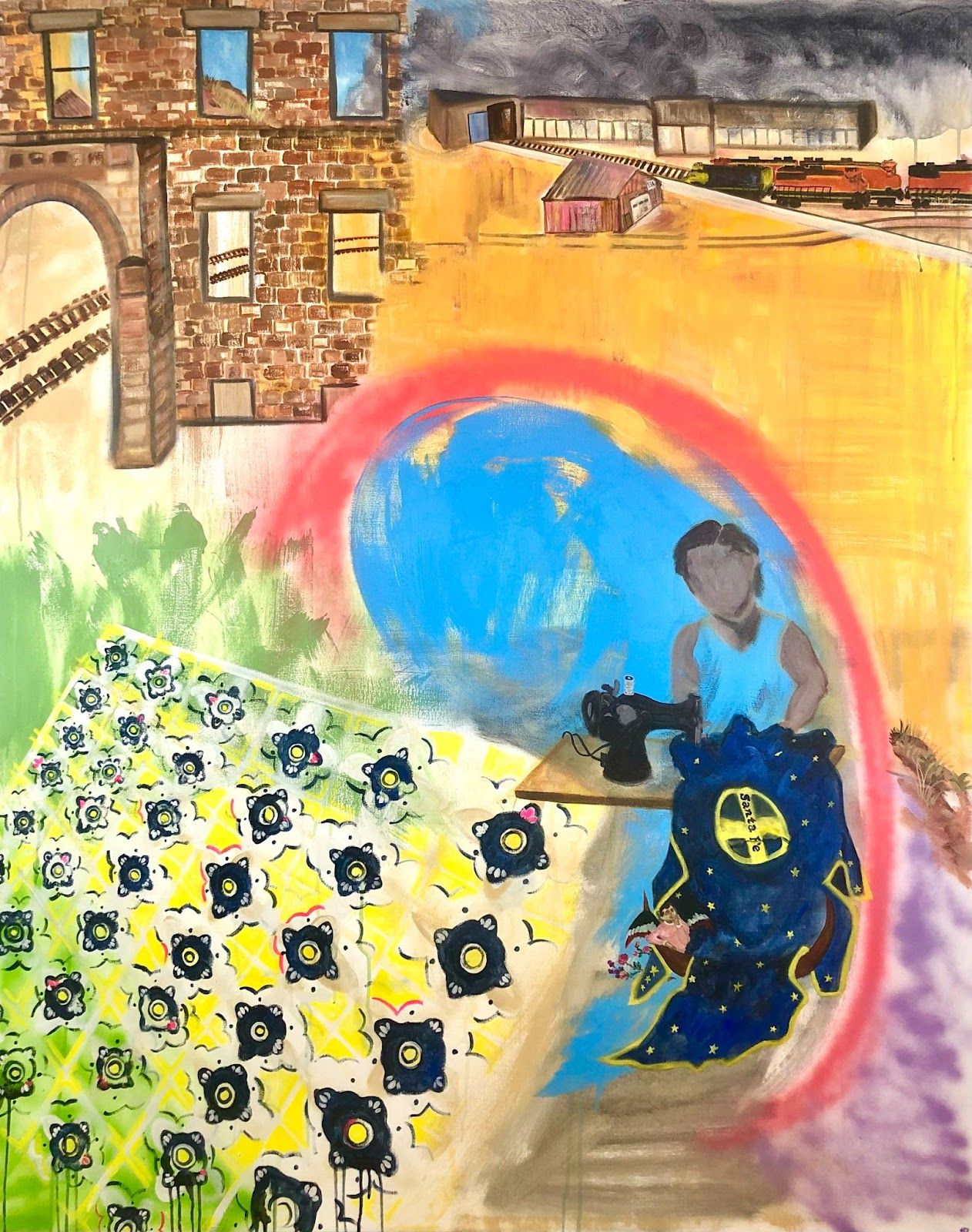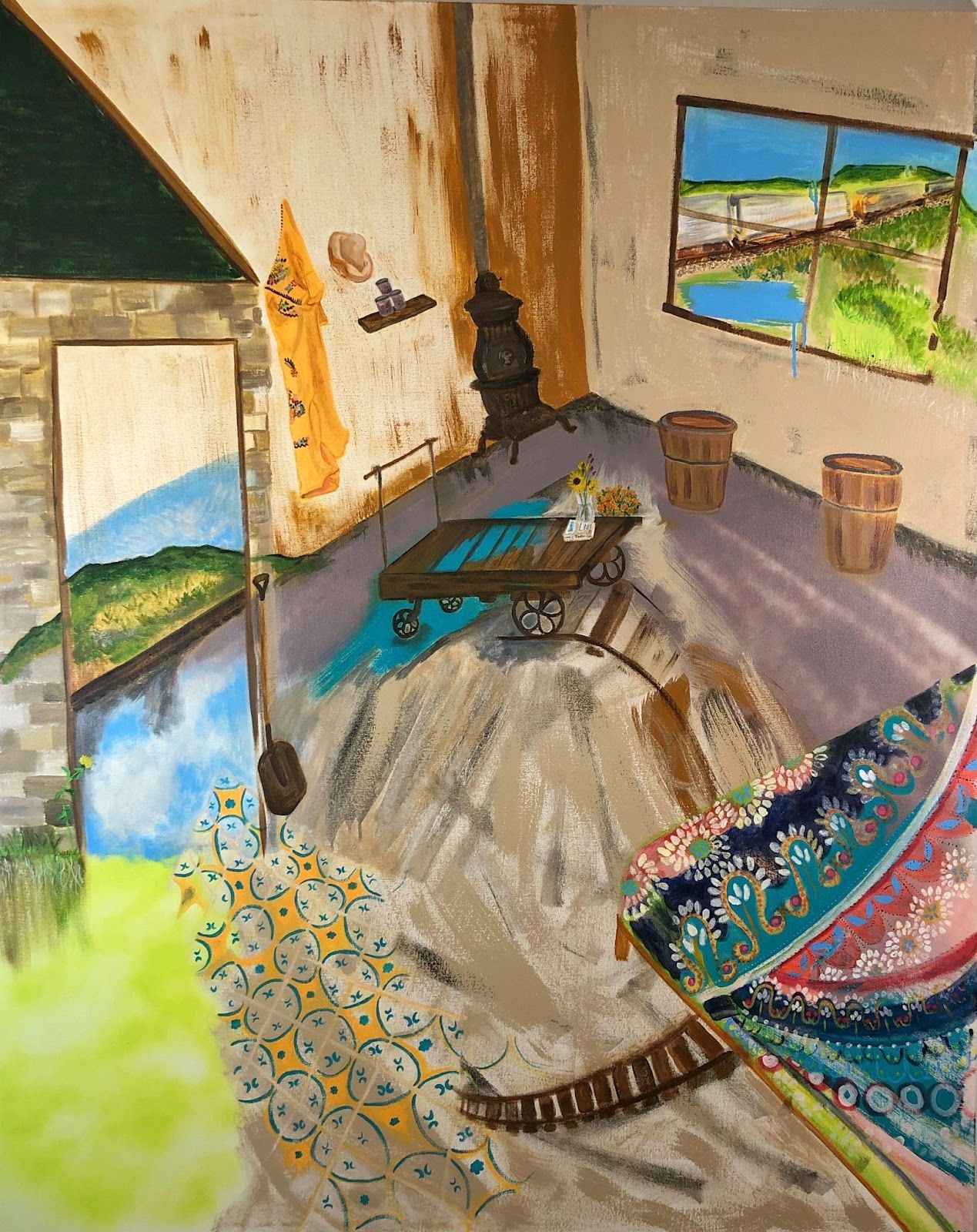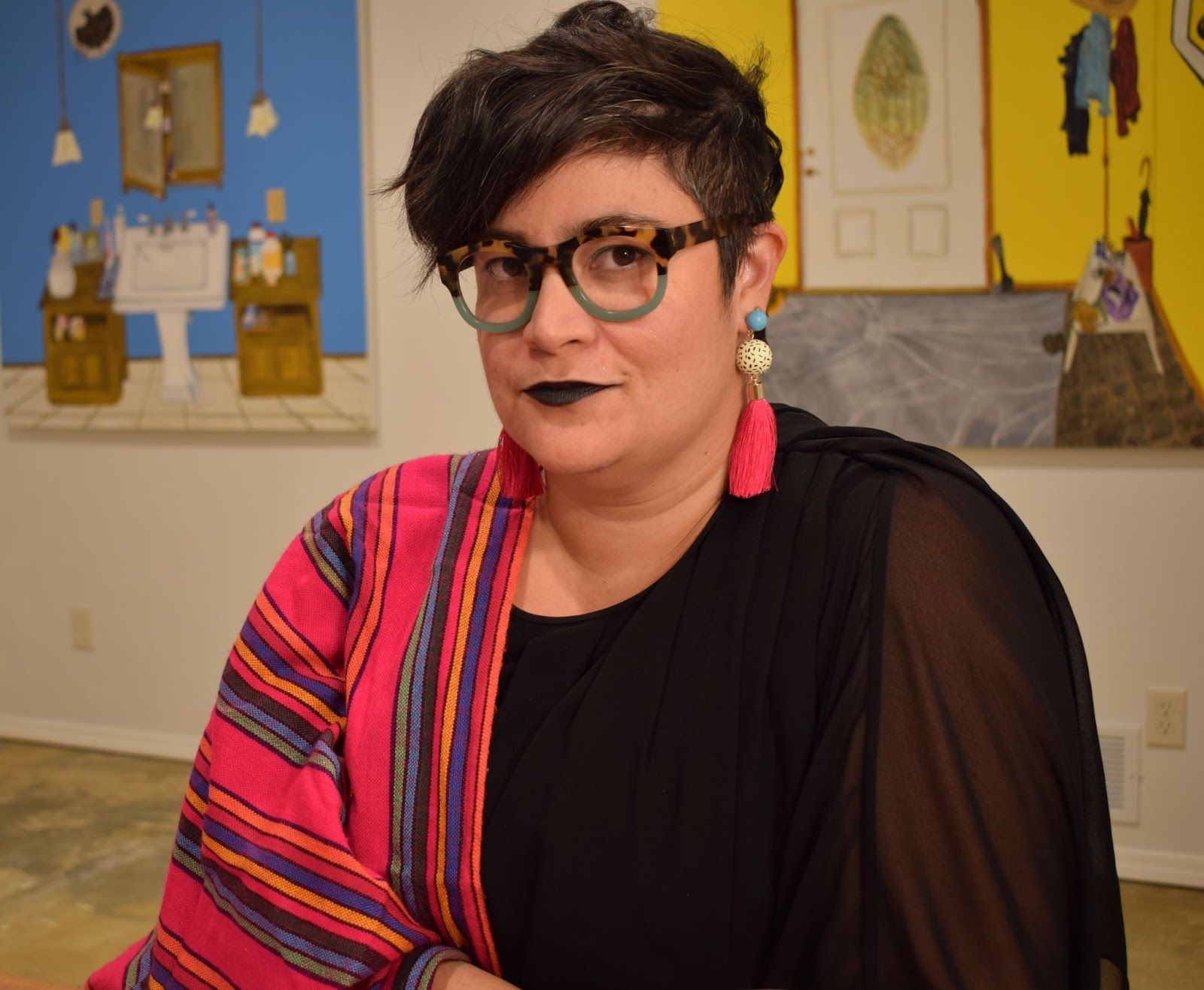Artist's Joy: Kandace Creel Falcón and 3 pieces from 'Roots'
Explore a selection that reflects the artist's family history and the history of the Midwest.

Heritage Colors of the Santa Fe
To understand the origins of my recently released body of work called “Roots,” I wish to begin at the beginning. However, the beginning of the journey has many starting points. I could offer that the true beginning took place outside of the National Archives in Washington, D.C., during the summer of 2015. A hot July day, the concrete pavement and marble monuments steamed with humidity as I looked up to one of the sentinels perched outside the Corinthian columns. Etched in stone, “WHAT IS PAST IS PROLOGUE” greets visitors before passing through metal detectors and locking up one’s belongings in order to access the treasure trove of archived documents.
Or perhaps the beginning is when I uncovered my great-grandfather’s labor card noting his entry into the United States in October of 1914 at the age of 18 in those very same archives.
Or, the beginning might trace back to 2008, when I conducted an oral history with my Tía Gloria, who recounted that as a child in the 1950s, she would wave at the trains going by while she played near the tracks outside her childhood home believing her grandfather was driving the trains.
Whatever the true origin of these paintings’ birth, it is clear that I have been called to share the under-told histories of Mexican railroad workers in the Midwest. I’ve tried to do this in words and, over the last two years, have been trying to tell the story in a new way — through painting.
“Roots,” a series of 15 paintings, is my offering where I paint stories back into public consciousness with more dignity than was afforded them over 100 years ago. In my artistic practice I am driven to expose the intimate connections between domesticity, industry, and geography. These paintings highlight the under-told stories of the roots of Kansas Mexican American communities via railroad laboring at the turn of the 20th century.

Santa Fe
In 1900, the U.S. Census recorded 71 foreign-born Mexican people in the state of Kansas. Three years later the Santa Fe Railroad had recruited hundreds of Mexican men to employ on its Kansas lines. By 1910, census efforts documented 8,400 Mexican peoples in the state.
This series of narrative paintings examines the legacies of what took root from these migration paths and rewrites women’s presence into the historical record. I use color and spatial disorientation techniques as an entry point for reckoning with historical erasures and healing ancestral traumas through the process of painting.
Why is it that we know more about the official colors of railroad companies and the trains that don them than the stories of a vital workforce purposefully recruited to labor on the rails? The few historical accounts that speak to Mexican railroad laborers’ presence erase the role of women who also migrated with their partners and children to create community and collectively labor for Midwestern railroad companies.
I use house paint alongside acrylic and spray paint to center the complexities of home and belonging for people often constructed by newspaper narratives at the time as dangerous outsiders.
Through exposing the messy erosions of public and private spaces in company owned railroad housing and racially segregated neighborhoods on the “wrong side of the tracks,” I advance historical research processes that have been unable to fully capture Mexican-origin women's stories as vital to Midwestern histories. Further, I connect women’s lived realities to public institutions beyond the space of the home.
I am committed to exploring gendered labor as a key theme in all of my work. In this series I draw attention to the oft-forgotten domestic labor as essential as railroad-tie spike-drivers to a fraught nation-building project.

Aztec Sky, KS
I have always believed place matters — to make sense of home we must understand more about the spaces we occupy. Given Kansas is a prairie ecology, and home to the largest remaining swath of undisturbed tallgrass prairie in the world, “Roots” signifies the connections humans have to the land, economies, and the complex systems that we can learn to see if we are willing to look below the surface.
My paintings consider roots in a variety of ways. I bring forth our stories through our ancestral connections, our familial roots, via migration paths trodden by migrant laborers. I highlight the roots of prairie ecologies as a human committed to fighting back the negative impacts of climate change. And, I trace the roots of the railroad industry and the legacies of anti-Mexican sentiments still reverberating today.
I make visible the invisible in the context of the turn of the 20th century American history narratives about Mexican presence in Kansas to explore what has been planted in the prairie through the tracks of the railroad for our contemporary consideration. The past remains my favorite entry point for my work, especially when we understand it as the prologue to our current story.

Meet the artist
Kandace Creel Falcón, Ph.D., is an interdisciplinary feminist scholar, writer, and visual artist based in rural Erhard, Minn. (Much of their family still lives in Kansas.) Drawn to inquiry and mixed-media methods of painting, fabric arts, and writing, their work is committed to sharing narratives for social transformation. Learn more at www.kjcfalcon.com or on Instagram and Facebook @ArtofKCF.
This feature was originally published in the Project Optimist newsletter on Nov. 9, 2022.
